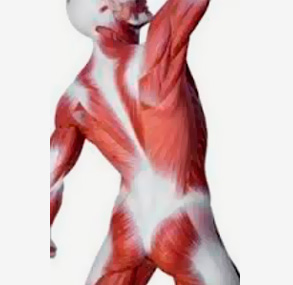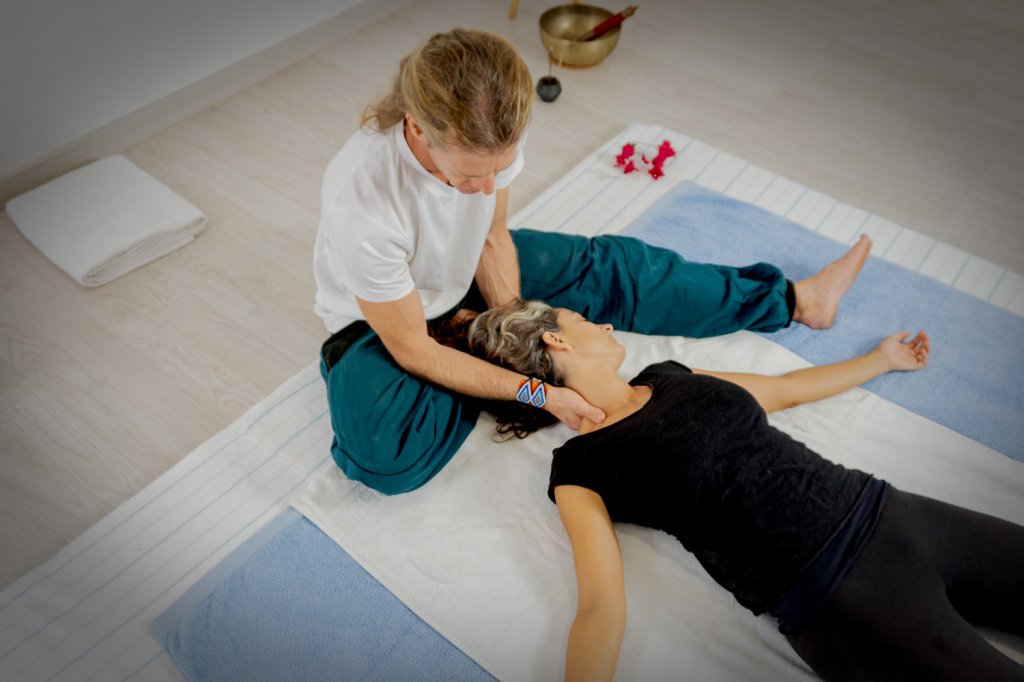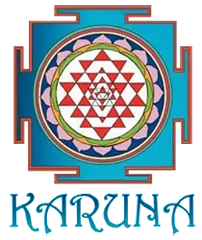We work through the body to connect the intelligence of the mind with the wisdom of the heart
Body treatments in San Isidro
With the body treatments that we carry out at Karuna Bienestar you will be able to maintain an optimal state of well-being, avoiding pain by balancing the body's energies and promoting self-healing capacity. Among the treatments we offer in San Isidro are:
Treatments
-
MASSAGE (decontracting + relaxing)

Massage:
From an etymological point of view, the term "quiromassage" comes from the union of the Greek voice "χείρ, χειρός" that is "quiros" hands, with the voice "" "knead or squeeze gently". So it literally means 'hand massage' or 'manual massage' and is used to differentiate it from massages that use electrical devices or mechanical instruments. Massage techniques are established and applied according to the specific objective to be achieved.
The "quiromassage" is a method of exploration (through perceptual palpation) and manual treatment, applied on the body covering and transmitted by the mechanical pressure of the hands to the different organs and tissues of the human body, which has at the same time, Regulatory effects on pain, general sense of energy, moods, fatigue and in general on the psyche. Depending on the indication and the proposed treatment objectives, effects that generate direct and / or reflex actions on the body can be achieved.
The benefits of massage have reached our days evolving from the simplest techniques to provide relaxation and promote sleep, to the specific development of some more complex ones to alleviate or eliminate specific ailments of the body and / or the organism.
The main effects are:
Mechanical: in reference to how the mechanical forces related to each maneuver affect the tissues.
Physiological-hygienic: when the massage is carried out on a healthy person to provide greater vigor to the body or to relieve fatigue and, it is associated with the practice of physical exercise or light gymnastics, and / or sauna, steam bath or Turkish bath , etc.
Preventive: they are fulfilled when a tense area or with possible injury is located and delimited by palpation, we inform the subject receiving the massage and if it is feasible it is treated. In addition, by advising that the treatment be combined with the practice of moderate exercise, it is possible to promote well-being and that the massage lasts. Thus fulfilling several of the functions of the manual therapist: care-prevent, treat and promote health.
Therapeutic: when massage is used to improve circulatory function, regain restricted mobility between damaged tissues, relieve and / or reduce pain, or to optimize sensory awareness. At the moment in which the massage provides human support, relaxation and well-being, helping in the recovery and maintenance of health, it becomes, even without intending it, a therapeutic act.
Aesthetic-hygienic: when mobilizing the skin, a mechanical dragging or cleaning effect is produced, thus eliminating the scaly cells. When the QM is intended to improve the external appearance of the person, eliminating fat deposits, restoring muscle tone and relaxing fatigue. It has hygienic results since by eliminating fatigue in a healthy person it produces an aesthetic result.
Sports: when it is carried out to prepare an athlete for competitive purposes before, during and after practicing it.
Psychological-emotional: the contact of the experienced hand provides calm, security and comfort to the treated person, provides relaxation, while regulating and relieving psychophysical tension.
Regulates the function: massage helps to improve the self-healing capacity of our body. -
MYOFASCIAL INDUCTION

Myofascial induction
Myofascial induction refers to a type of body treatment that involves connecting with the connective tissues of the body. The connective (or conjunctive) tissues are all the tissues that connect and separate the different structures of the body; It includes the tendons, ligaments, periosteum, and the different "layers" that cover and link organs, blood vessels, nerves, muscles, and bones.
It comes from the practice of structural, visceral and cranio-sacral osteopathy.
The treatment of the fascia is like an instrument capable of reestablishing the natural movement of the tissues and consequently alleviating the pain that arises in different parts of the body.
But myofascial induction (also called "fascia therapy" in some countries such as France or Portugal) goes much further since it is an instrument of relationship, of help through the touch of "playing". In the silent dialogue of touch, a reunion of the patient with his body is installed. The suffering, distant, unnoticed body is once again a sensitive body, in movement, excited and moved.
Physical pain is often entrusted to the manual therapist and moral pain to the psychologist. We, as manual therapists, have the possibility of hearing the request of the body that is generally not heard by the psychologist because it is said through the dialogue of the organic tissues and not through verbal language. That suffering must be heard and included.
What diseases does Myofascial Induction target?
Fascia therapy is directed at various types of pain, such as locomotor, cranial, visceral, accompanied or not by functional disorders such as digestive, respiratory and gynecological.
It also allows to relieve psychosomatic pain and somatizations that accompany psychological disturbances and states of stress.
The pains of the child, of the elderly and the pains that accompany cancers or other serious diseases, are also susceptible to entering the field of competence of myofacial induction.
-
AROMATHERAPY

Aromatherapy
“Everything that lives, does nothing but offer you gifts and place them at your feet. The scent of flowers is a gift for you”
(A course in miracles)
Aromatherapy is characterized by the use of essences through which we use the properties of essential oils extracted from aromatic plants, to restore balance and harmony of the body and mind for the benefit of our health.
Aromatherapy can be used exclusively or as an accompaniment to other treatments, in the second case as support for its success. The strength of aromatherapy lies in its power to reach the emotional root by awakening our own healing energies.
Aromas act within us by association of images, avoiding the intervention of our conscious part that analyzes everything and translates everything into understandable words.
It is for this reason that aromatherapy is considered as the language of the soul: what our brain perceives through smell, places it in the area of spiritual perceptions, harmonizing our energy body and thus accessing the regulation of the area physical that needs to be reconstituted.
Science has shown that people respond to smells at a higher emotional level than the other senses. An aroma can trigger a whole succession of almost forgotten memories, the area of the brain associated with the smell is the same as that of memory. The olfactory region is the only place in our body where the central system is closely related to the outside world, in this way, olfactory stimuli reach directly the most internal connection centers of our brain. The neurons of the olfactory region are primary sensory neurons and are part of the brain neurons.
On the other hand, when you smell something, emotional memory is evoked, you can relate emotions. Thus, the associative memory of aromas and situations generate the use of oils for therapeutic use, since consciousness registers the aroma with the setting. Some oils have the property of transforming and balancing our emotions, reducing anxiety, depression or mental fatigue.
Aromatherapy acts on the subtle planes, which is why it helps meditation, visualizations, concentration and all those techniques aimed at seeking inner balance and harmony.
-
SHIATSU

Shiatsu
Shiatsu is an official therapy recognized within the Japanese health system and defined by its Ministry of Health (health, work and well-being) as follows:
Shiatsu is a treatment that, through the pressure of the fingers on certain points of the body, maintains and improves health, alleviates various diseases, corrects body irregularities and reactivates the body's self-healing capacity. It has no side effects and can be called shiatsu or shiatsu treatment.
The International Shiatsu Association, the application and learning of shiatsu is based on the definition of the Ministry of Health of Japan.
The word shiatsu is made up of two ideograms, the first means finger and the second, pressure. Therefore, its literal translation is finger pressure.
-
PODAL REFLEXOLOGY

Foot reflexology
It is a diagnosis and treatment technique in which certain areas of the body are stimulated to obtain healthy responses from the different organs of the body.
Through Reflexology we can obtain a healthy response from the organs, apparatus and systems through the appropriate stimulation applied to the corresponding reflex zones. With this stimulation it is possible to establish the natural balance of energy and the harmonic functionality of the whole organism.
The energy will flow following certain routes. It may happen that the possible channels are blocked and there is some sensitivity in relation to these points, this indicates that the discomfort or condition of the body may be in another part other than the sensitive area. Performing massages on specific reflex points allows the channels to be uncovered, restoring the energy flow and at the same time calming any pain and restoring full functioning.
Reflexology is used in many cases and is especially effective in calming pain (back, head and toothaches), in treating digestive disorders, stress, tension, colds, flu, asthma, arthritis and many others, it is also possible to detect potential diseases and even apply preventive treatment.
-
REIKI

Reiki is a Japanese word that means universal life energy or divine breath.
Rei means universal and refers to the spiritual part, to the cosmic energetic essence, which internally penetrates all things and surrounds all spaces, it is the consciousness of energy.
Ki is the individual vital energy, it is energy that provides the life that surrounds and penetrates our bodies keeping them alive, when this ki energy leaves the body, it ceases to have life.
Reiki comes from the universal energy field, it is the fundamental element that constitutes our universe. Everything that manifests matter, earth, plants, people is the intensification of the single field.
Reiki is a treatment through the transmission of energy. By doing Reiki we channel the universal energy that carries consciousness and vitality. If we apply Reiki on a system (such as man), it will help its restoration (balance) at all levels, physical, emotional, mental and spiritual.
Different vibrations of this field are perceived by our senses from different forms of matter. The term vital energy field means tiny subatomic particles, we can define them as primal atoms since they carry all the information in themselves and are spread through all the space of the universe in a "continuous" way.
Reikists support Reiki as one of the most effective treatments based on its vibrational character, which reaches all the energy fields or bodies of the being.
CHIROMASSAGE (decontracting + relaxing)
Chiromassage: sports massage
From an etymological point of view, the term "quiromassage" comes from the union of the Greek voice "χείρ, χειρός" that is "quiros" hands, with the voice "" "knead or squeeze gently". So it literally means 'hand massage' or 'manual massage' and is used to differentiate it from massages that use electrical devices or mechanical instruments. Massage techniques are established and applied according to the specific objective to be achieved.
The "quiromassage" is a method of exploration (through perceptual palpation) and manual treatment, applied on the body covering and transmitted by the mechanical pressure of the hands to the different organs and tissues of the human body, which has at the same time, Regulatory effects on pain, general sense of energy, moods, fatigue and in general on the psyche. Depending on the indication and the proposed treatment objectives, effects that generate direct and / or reflex actions on the body can be achieved.
The benefits of massage have reached our days evolving from the simplest techniques to provide relaxation and promote sleep, to the specific development of some more complex ones to alleviate or eliminate specific ailments of the body and / or the organism.
The main effects are:
- Mechanical: in reference to how the mechanical forces related to each maneuver affect the tissues.
- Physiological-hygienic: when the massage is carried out on a healthy person to provide greater vigor to the body or to relieve fatigue and, it is associated with the practice of physical exercise or light gymnastics, and / or sauna, steam bath or Turkish bath , etc.
- Preventive: they are fulfilled when a tense area or with possible injury is located and delimited by palpation, we inform the subject receiving the massage and if it is feasible it is treated. In addition, by advising that the treatment be combined with the practice of moderate exercise, it is possible to promote well-being and that the massage lasts. Thus fulfilling several of the functions of the manual therapist: care-prevent, treat and promote health.
- Therapeutic: when massage is used to improve circulatory function, regain restricted mobility between damaged tissues, relieve and / or reduce pain, or to optimize sensory awareness. At the moment in which the massage provides human support, relaxation and well-being, helping in the recovery and maintenance of health, it becomes, even without intending it, a therapeutic act.
- Aesthetic-hygienic: when mobilizing the skin, a mechanical dragging or cleaning effect is produced, thus eliminating the scaly cells. When the QM is intended to improve the external appearance of the person, eliminating fat deposits, restoring muscle tone and relaxing fatigue. It has hygienic results since by eliminating fatigue in a healthy person it produces an aesthetic result.
- Sports: when it is carried out to prepare an athlete for competitive purposes before, during and after practicing it.
Psychological-emotional: the contact of the experienced hand provides calm, security and comfort to the treated person, provides relaxation, while regulating and relieving psychophysical tension. - Regulates the function: massage helps to improve the self-healing capacity of our body.
SHIATSU
Shiatsu
Shiatsu is an official therapy recognized within the Japanese health system and defined by its Ministry of Health (health, work and well-being) as follows:
Shiatsu is a treatment that, through the pressure of the fingers on certain points of the body, maintains and improves health, alleviates various diseases, corrects body irregularities and reactivates the body's self-healing capacity. It has no side effects and can be called shiatsu or shiatsu treatment.
The International Shiatsu Association, the application and learning of shiatsu is based on the definition of the Ministry of Health of Japan.
MYOFASCIAL INDUCTION
Myofascial induction
Myofascial induction refers to a type of body treatment that involves connecting with the connective tissues of the body. The connective (or conjunctive) tissues are all the tissues that connect and separate the different structures of the body; It includes the tendons, ligaments, periosteum, and the different "layers" that cover and link organs, blood vessels, nerves, muscles, and bones.
It comes from the practice of structural, visceral and cranio-sacral osteopathy.
The treatment of the fascia is like an instrument capable of reestablishing the natural movement of the tissues and consequently alleviating the pain that arises in different parts of the body.
But myofascial induction (also called "fascia therapy" in some countries such as France or Portugal) goes much further since it is an instrument of relationship, of help through the touch of "playing". In the silent dialogue of touch, a reunion of the patient with his body is installed. The suffering, distant, unnoticed body is once again a sensitive body, in movement, excited and moved.
Physical pain is often entrusted to the manual therapist and moral pain to the psychologist. We, as manual therapists, have the possibility of hearing the request of the body that is generally not heard by the psychologist because it is said through the dialogue of the organic tissues and not through verbal language. That suffering must be heard and included.
What diseases does Myofascial Induction target?
Fascia therapy is directed at various types of pain, such as locomotor, cranial, visceral, accompanied or not by functional disorders such as digestive, respiratory and gynecological.
It also allows to relieve psychosomatic pain and somatizations that accompany psychological disturbances and states of stress.
The pains of the child, of the elderly and the pains that accompany cancers or other serious diseases, are also susceptible to entering the field of competence of myofacial induction.
PODAL REFLEXOLOGY
Foot reflexology
It is a diagnosis and treatment technique in which certain areas of the body are stimulated to obtain healthy responses from the different organs of the body.
Through Reflexology we can obtain a healthy response from the organs, apparatus and systems through the appropriate stimulation applied to the corresponding reflex zones. With this stimulation it is possible to establish the natural balance of energy and the harmonic functionality of the whole organism.
The energy will flow following certain routes. It may happen that the possible channels are blocked and there is some sensitivity in relation to these points, this indicates that the discomfort or condition of the body may be in another part other than the sensitive area. Performing massages on specific reflex points allows the channels to be uncovered, restoring the energy flow and at the same time calming any pain and restoring full functioning.
Reflexology is used in many cases and is especially effective in calming pain (back, head and toothaches), in treating digestive disorders, stress, tension, colds, flu, asthma, arthritis and many others, it is also possible to detect potential diseases and even apply preventive treatment.
AROMATHERAPY
Aromatherapy
“Everything that lives, does nothing but offer you gifts and place them at your feet. The scent of flowers is a gift for you”
(A course in miracles)
Aromatherapy is characterized by the use of essences through which we use the properties of essential oils extracted from aromatic plants, to restore balance and harmony of the body and mind for the benefit of our health.
Aromatherapy can be used exclusively or as an accompaniment to other treatments, in the second case as support for its success. The strength of aromatherapy lies in its power to reach the emotional root by awakening our own healing energies.
Aromas act within us by association of images, avoiding the intervention of our conscious part that analyzes everything and translates everything into understandable words.
It is for this reason that aromatherapy is considered as the language of the soul: what our brain perceives through smell, places it in the area of spiritual perceptions, harmonizing our energy body and thus accessing the regulation of the area physical that needs to be reconstituted.
Science has shown that people respond to smells at a higher emotional level than the other senses. An aroma can trigger a whole succession of almost forgotten memories, the area of the brain associated with the smell is the same as that of memory. The olfactory region is the only place in our body where the central system is closely related to the outside world, in this way, olfactory stimuli reach directly the most internal connection centers of our brain. The neurons of the olfactory region are primary sensory neurons and are part of the brain neurons.
On the other hand, when you smell something, emotional memory is evoked, you can relate emotions. Thus, the associative memory of aromas and situations generate the use of oils for therapeutic use, since consciousness registers the aroma with the setting. Some oils have the property of transforming and balancing our emotions, reducing anxiety, depression or mental fatigue.
Aromatherapy acts on the subtle planes, which is why it helps meditation, visualizations, concentration and all those techniques aimed at seeking inner balance and harmony.
REIKI
Reiki
Reiki is a Japanese word that means universal life energy or divine breath.
Rei means universal and refers to the spiritual part, to the cosmic energetic essence, which internally penetrates all things and surrounds all spaces, it is the consciousness of energy.
Ki is the individual vital energy, it is energy that provides the life that surrounds and penetrates our bodies keeping them alive, when this ki energy leaves the body, it ceases to have life.
Reiki comes from the universal energy field, it is the fundamental element that constitutes our universe. Everything that manifests matter, earth, plants, people is the intensification of the single field.
Reiki is a treatment through the transmission of energy. By doing Reiki we channel the universal energy that carries consciousness and vitality. If we apply Reiki on a system (such as man), it will help its restoration (balance) at all levels, physical, emotional, mental and spiritual.
Different vibrations of this field are perceived by our senses from different forms of matter. The term vital energy field means tiny subatomic particles, we can define them as primal atoms since they carry all the information in themselves and are spread through all the space of the universe in a "continuous" way.
Reikists support Reiki as one of the most effective treatments based on its vibrational character, which reaches all the energy fields or bodies of the being.
For treatments it is advisable to make an appointment by calling
